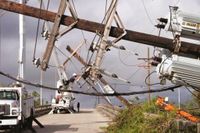Twenty years on from the day Hurricane Katrina crashed ashore, New Orleans remains a city marked by both profound loss and irrepressible spirit. The anniversary of the storm’s devastation—August 29, 2025—brought together dignitaries, survivors, and musicians in a citywide remembrance, but also reignited debate over what has truly changed since the floodwaters receded.
At the heart of the commemorations was the Lower Ninth Ward, a neighborhood that bore the brunt of the catastrophe and still carries its scars. On September 1, 2025, a gathering there featured former Vice President Al Gore and New Orleans rapper, educator, and cookbook author Mia X. According to Nola.com, the event became a platform for residents to vent their ongoing anger and frustration, not only about the storm itself but about the failures that followed. Many in attendance described the aftermath as nothing less than an “ethnic cleansing” of New Orleans’ wards, a sentiment echoed in the impassioned speeches and the emotional street festival that followed.
Gore, who has become a prominent climate change advocate since his narrow loss in the 2000 presidential race, drew a direct line between the devastation of Katrina and the larger, unresolved climate crisis. “Let’s don’t lose the connection between Hurricane Katrina and the climate crisis, which is still getting worse. And they’re (the federal government) not doing anything meaningful about it. They are tearing apart FEMA after they improved it and fixed some of the terrible mistakes made 20 years ago,” Gore told the crowd. “And the causes of the climate crisis are still continuing to get worse. It is a fossil fuel crisis—and I know it’s tricky and delicate to talk about the fossil fuel industry here in Louisiana.”
He recalled, with a hint of lingering regret, how he was scheduled to speak to insurance commissioners from all 50 states in Louisiana exactly 20 years earlier—a meeting canceled by Katrina and never rescheduled. “Of course it had to be canceled. It’s never been rescheduled. We’ve got to wake up!” Gore exclaimed, urging the crowd to connect the dots between past disasters and future risks.
Yet, as the city marked its anniversary with solemn memorials, uplifting music, and a brass band parade, the conversation was far from one-dimensional. Mayor LaToya Cantrell, speaking at a cemetery where dozens of unidentified Katrina victims are interred, struck a note of resilience and hope. “New Orleans still stands,” Cantrell declared, “New Orleans came back better and stronger than ever before.” As reported by the Associated Press, the city’s famed second line procession—rooted in African American jazz funerals—filled the streets with exuberance, even as participants remembered the dead and the displaced.
But not everyone shared the mayor’s optimism. City Council member J.P. Morell, for one, challenged the narrative of “resilience” that has so often been attached to Katrina survivors. “Resilience is passive—you endure stuff that happens to you. We are not resilient. We are indomitable. We are a city that, no matter what obstacle is placed before us, we run through it,” Morell told the Lower Ninth Ward crowd, as quoted by Nola.com.
For many, the wounds of Katrina remain open. Burnell Cotlon, a resident of the Lower Ninth Ward, painted a stark picture of ongoing hardship. “This is not a third-world country. This is New Orleans. Now, we’re only 10 minutes from the French Quarter. And the people that’s here in the Lower Ninth Ward, they’re still suffering. I lost everything. I had to start life all over. I had, like, 30 plus some neighbors. Today I have four. There’s nothing back here, you know? People forgot about the Lower Ninth Ward. I got to stay strong, positive. But sometimes it hurts. It hurts because when I drive from my house to come here, I remember, they had a store here, they had a school here, we had a hospital here. We had everything back here,” Cotlon told NPR.
The catastrophic scale of Katrina’s impact remains almost unfathomable. When the Category 3 hurricane struck Louisiana on August 29, 2005, it killed nearly 1,400 people across five states and caused an estimated $200 billion in damage, according to the National Oceanic and Atmospheric Administration. The failure of the federal levee system inundated about 80% of New Orleans in floodwaters that lingered for weeks. Thousands were stranded on rooftops or in the sweltering, under-provisioned Superdome stadium, an image seared into the nation’s memory.
Author Andy Horowitz, whose book “Katrina: A History 1915-2015” examines the disaster in depth, described the response as “disastrous” and “manifestly, murderously ill-prepared.” Speaking to NPR, he noted, “Government at every level was manifestly, murderously ill-prepared for this widely predicted possibility. People were left to drown in their own houses. Even people who had made it to emergency shelters designated by the city found them empty, without any help, any food or water. Katrina represented, I think, such a failure so shocking that it made many people question the promise of American citizenship itself.”
Much of the blame for the botched response fell on FEMA, which, under President George W. Bush, had seen funding cuts that left it unprepared for a disaster of Katrina’s magnitude. The Guardian reported that these policy decisions mirrored later actions by President Donald Trump, who has faced criticism for moves to dismantle FEMA.
As the city paused to remember, the anniversary also highlighted the uneven recovery that followed. The Lower Ninth Ward’s Katrina memorial had, until recently, fallen into disrepair—only restored after public outcry earlier this month. Community leaders pointed to ongoing challenges: gentrification, a worsening affordable housing crisis, crumbling infrastructure, and persistent neglect of the city’s poorest neighborhoods. The city’s population, once nearly half a million, now stands at 384,000, with the exodus disproportionately affecting Black residents. A federal rebuilding program favored the city’s predominantly white and wealthy neighborhoods, leaving many in need behind.
Yet, in the face of so much loss, the city’s commemorative spirit endures. Robert Green, a Katrina survivor, summed up the mood: “I’m a New Orleanian. Our thing is commemorative. Our thing is celebrating their lives. Our thing is giving reverence to the people who lost their lives, the community that was lost, and the idea that this community will come back one day.”
At the cemetery memorial, jazz clarinetist Michael White played “When the Saints Go Marching In” as wreaths were laid beside the mausoleums of storm victims. Orrin Duncan, who worked for the coroner during Katrina, continues to maintain the memorial each year, saying, “We do everything to keep the memory of these people alive.”
For some, like Michael Jenkins of the Zulu Social Aid and Pleasure Club, the anniversary was both joyful and somber. “It’s a joyful time, but it’s also a somber time because we remember that we overcame a lot. By the grace of God, we’re still here.”
The story of Katrina is far from over. The city’s wounds are deep, but so too is its determination to remember, to honor, and to rebuild. As the brass bands played and the second line paraded through the streets, New Orleans showed—once again—that its spirit is anything but broken.


